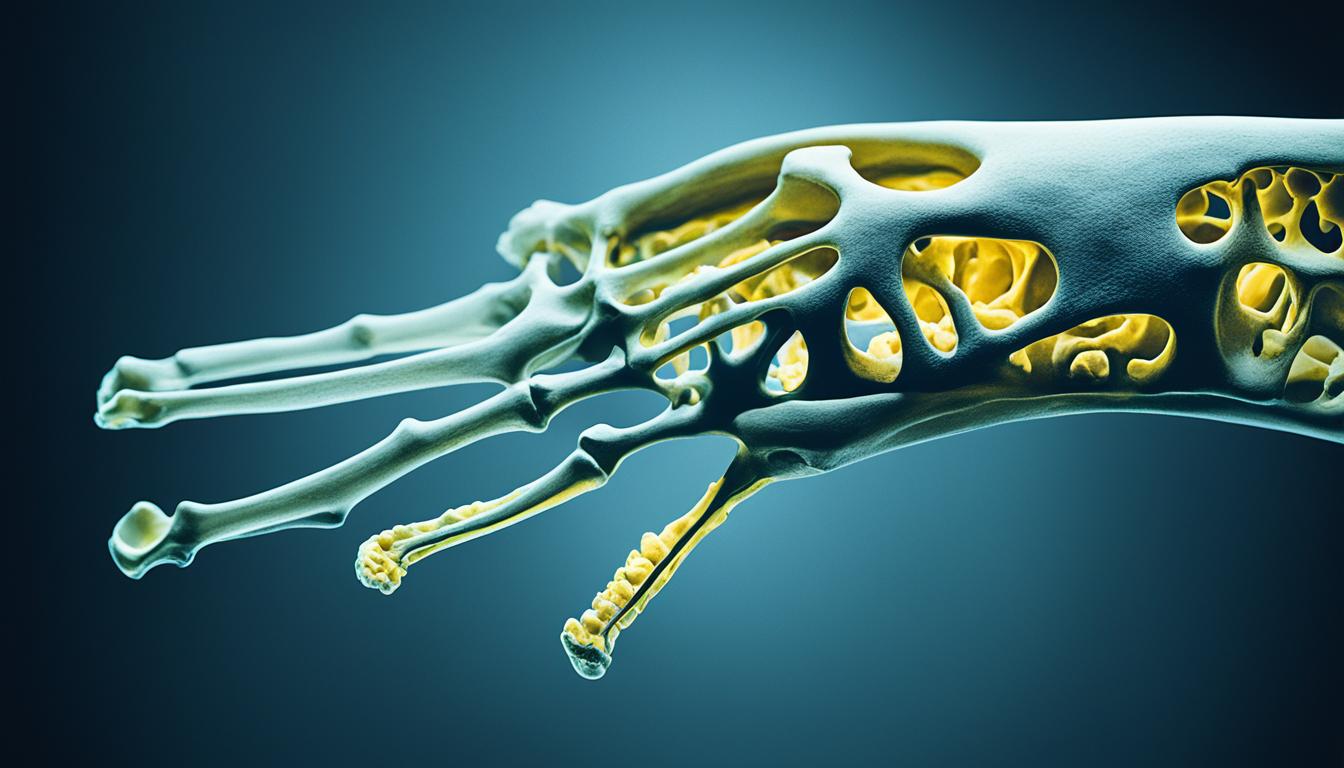Bone cancer is a rare disease. It happens when abnormal cells in the bones grow uncontrollably. Benign bone tumors are not cancerous but can cause bone weakening and problems.
Primary bone cancer is a cancerous tumor that starts in the bone. The main types include osteosarcoma, Ewing’s sarcoma, and chondrosarcoma. Multiple myeloma affects bones but is not primary bone cancer. It is cancer of the marrow.
Alternatively, bone cancer can be secondary. This means it started in another part of the body and spread to the bones. Tumors from breast, lung, and prostate cancer can spread to the bones. There are risk factors like previous cancer treatment, inherited conditions, and Paget’s disease of bone.
Symptoms of bone cancer are pain, swelling, and fractures. It is diagnosed through X-rays, CT scans, MRI scans, and PET scans. Blood tests and biopsies are also used. Treatment involves surgery, radiation, and chemotherapy. Targeted therapy, clinical trials, and regular checkups are crucial to manage and prevent the return of cancer.
Key Takeaways:
- Bone cancer is a rare disease where abnormal cells grow in the bone.
- Most bone tumors are benign, but they can still weaken the bones.
- Primary bone cancer, or bone sarcoma, starts in the bone and can be different types such as osteosarcoma, Ewing’s sarcoma, and chondrosarcoma.
- Bone cancer can also be secondary, meaning it spreads from another part of the body.
- Risk factors for bone cancer include previous cancer treatment, inherited conditions, and Paget’s disease of bone.
- Diagnosis involves imaging tests, blood tests, and biopsies.
- Treatment options include surgery, radiation therapy, chemotherapy, targeted therapy, and clinical trials.
- Regular checkups are important for monitoring and prevention of recurrence.
Sarcoma Types, Symptoms, and Diagnosis
Sarcoma is a type of cancer. It occurs in different forms. These include soft tissue sarcoma and bone sarcoma. Soft tissue sarcoma starts in the tissues connecting or surrounding the body’s systems. Bone sarcoma begins in the bones themselves.
Soft tissue sarcomas can develop in various body areas. These areas include fat, muscle, blood vessels, and skin tissues. They can also affect cartilage, tendons, and ligaments. In adults, they’re rare, making up only 1% of all adult cancers. Yet, they’re more common in children, accounting for about 15% of all childhood cancers.
The symptoms of sarcoma may differ based on its type and location. Usual signs include pain and a noticeable lump. In bone sarcoma, pain is a leading symptom. It often affects the long bones of the arms or legs, as well as the pelvis.
To diagnose sarcoma, doctors perform a comprehensive evaluation. This includes reviewing symptoms and medical history, and a physical exam. They also use various imaging tests, like X-rays and CT scans. MRIs, PET scans, and bone scans are also common. Blood tests and biopsies aid in further evaluation and confirmation.
If you notice any troubling symptoms, like lasting pain or a new lump, see a doctor. Quick diagnosis and treatment greatly increase the chance of a good outcome for sarcoma patients.
| Sarcoma Type | Symptoms | Diagnosis |
|---|---|---|
| Soft Tissue Sarcoma | Pain, presence of a lump | Physical examination, imaging tests (X-rays, CT scans, MRI scans, PET scans), blood tests, and biopsies |
| Bone Sarcoma | Pain, presence of a lump, affected long bones (arms, legs, or pelvis) | Physical examination, imaging tests (X-rays, CT scans, MRI scans, PET scans, bone scans), blood tests, and biopsies |
Treatment and Prognosis of Sarcoma
Dealing with sarcoma involves various treatments. The choice depends on the cancer type, stage, and spread. Options include limb salvage surgery. This surgery removes the cancerous bone but saves the surrounding tissues. Yet, in severe cases, amputation might be the only solution.
Radiation therapy can be used with surgery. It kills any cancer cells left. Chemotherapy uses strong drugs to fight the cancer all over your body.
Targeted therapy is a more focused treatment. It pinpoints certain changes in cancer cells. This way, it attacks the tumor more precisely. Taking part in clinical trials is also an option for those seeking new treatments.
When looking at sarcoma’s outlook, the cancer’s stage and its spread matter a lot. For example, localized sarcoma has an 81% survival chance after 5 years. But if it spreads, this chance drops to 16%. It’s key to remember these numbers can change with new medical breakthroughs. Regular checkups are vital for spotting any cancer return early.

